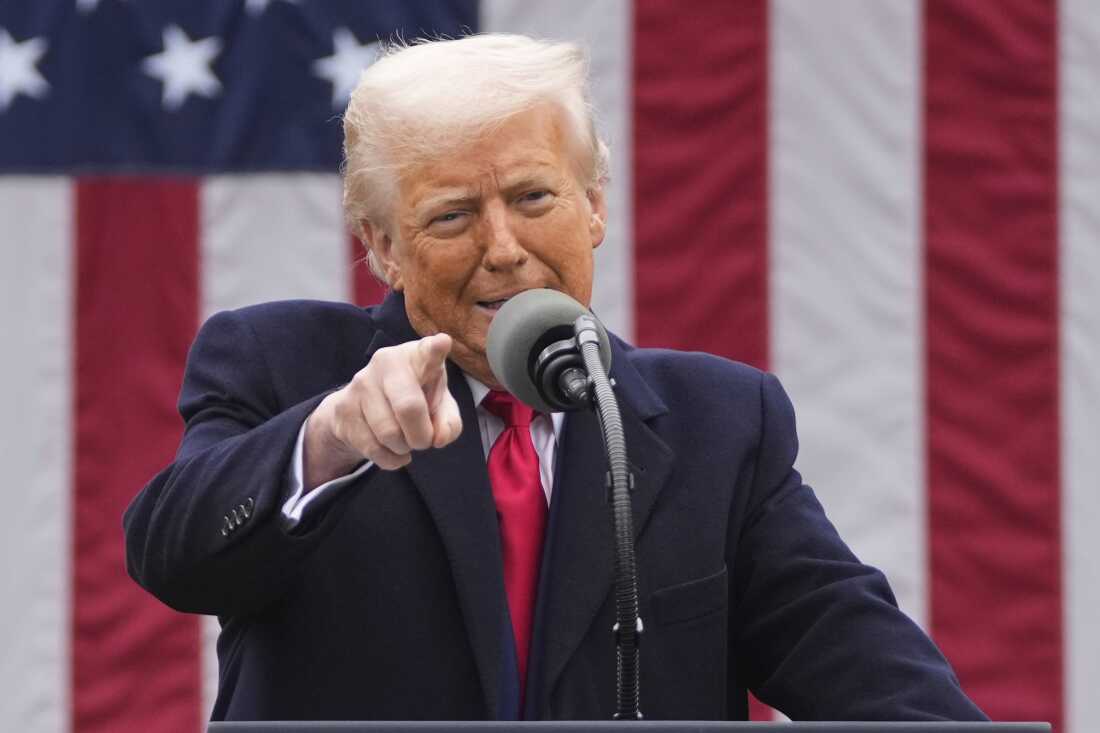Former President Donald Trump has proposed a new economic measure aimed at easing the financial burden on American households. The plan, which involves issuing $2,000 rebate checks tied to tariffs, has sparked debate among economists, policymakers, and the public, raising questions about its potential impact on inflation, trade, and the broader economy.
Trump’s suggestion arises amidst continuous conversations regarding the handling of economic repercussions stemming from global trade strategies. Tariffs, defined as levies applied to imported products, have historically served as a mechanism for the United States to safeguard local businesses, shape international relations, and accrue funds. Nevertheless, they can also result in elevated consumer prices and complexities within worldwide trade connections. Through the provision of refund checks matching specific tariff earnings, the concept aims to counteract the heightened expenses encountered by American families, effectively channeling funds gathered from import duties straight back to the populace.
Understanding the mechanics of the rebate
The $2,000 rebate concept is designed to function as a direct compensation to consumers for higher prices resulting from tariffs on imported products. Essentially, if tariffs drive up the cost of goods, the government would send payments to eligible Americans to neutralize some of that financial pressure. Proponents argue that this approach could provide immediate relief for families struggling with rising prices, particularly for essential items like food, clothing, and electronics.
Critics, however, caution that the plan could have unintended consequences. While it may temporarily increase disposable income, some economists warn it could exacerbate inflationary pressures. By injecting cash into the economy without a corresponding increase in supply, prices might rise further, potentially diminishing the intended benefit of the rebate. Additionally, there are concerns about how such a program would be funded, its administrative feasibility, and the potential for political polarization surrounding its implementation.
Economic and Political Ramifications
The proposition also holds considerable political significance. By connecting the refunds to duties—a characteristic feature of Trump’s past commercial regulations—the initiative resonates with a demographic that favors assertive protectionist approaches. It portrays the former head of state as a defender of the “average American,” directly tackling worries about living expenses and financial disparity. Concurrently, it reignites discussions regarding the actual efficacy of tariffs. Detractors contend that tariffs frequently harm domestic enterprises dependent on imported goods, potentially jeopardizing the enduring vitality of the economy.
From a broad economic standpoint, these rebates have the potential to shape how consumers act. With an injection of $2,000 per payment, households might boost their expenditures, thereby bolstering economic expansion in the near term. Businesses in retail and services could experience heightened demand, and specific industries might enjoy a temporary surge. However, economists are split on whether this initiative would result in lasting enhancements to the economic climate or simply offer a brief stimulus with restricted enduring impact.
Possible impacts on commercial ties
Another layer of complexity lies in the impact on international trade relations. Tariffs are a contentious tool, often sparking retaliatory measures from trading partners. While rebate checks might soften the domestic perception of tariffs, they do not eliminate the underlying trade barriers. Countries affected by U.S. tariffs may continue to impose their own tariffs or seek other measures to protect their industries, potentially leading to trade tensions.
Moreover, businesses involved in global supply chains could face challenges if tariffs and corresponding rebates are not implemented carefully. Companies that rely on imported materials might experience fluctuations in costs that are difficult to predict, potentially disrupting production schedules and affecting employment. Policymakers would need to balance the domestic benefits of rebates with the broader consequences for international commerce and domestic industries alike.
Public reception and viability
Public sentiment regarding the proposed rebate has been varied. A segment of the American populace embraces the concept as a straightforward method to ease financial burdens, especially amidst escalating living expenses. Conversely, others regard it with apprehension, doubting the feasibility of distributing such funds and the enduring effects on the economy. Both social platforms and news organizations have amplified expressions of endorsement and disapproval, mirroring wider disagreements within public discourse concerning trade regulations, governmental expenditure, and economic involvement.
Implementation feasibility is another critical factor. Issuing $2,000 payments to millions of Americans would require robust administrative infrastructure, including accurate identification of eligible recipients, coordination with banking systems, and mechanisms to prevent fraud. Past experiences with stimulus checks and rebate programs highlight the challenges inherent in executing large-scale payments efficiently. Any delays or errors could undermine public confidence and reduce the program’s effectiveness.
While the proposal is still largely conceptual, it has reignited discussions about how best to support households facing economic pressures. The rebate checks illustrate a broader debate about the intersection of trade policy and domestic welfare: how to protect American industries without placing undue burden on consumers. Policymakers, economists, and the public will likely continue to scrutinize the plan’s feasibility, potential economic impact, and political ramifications in the months ahead.
Ultimately, the $2,000 tariff rebate proposal highlights the persistent conflict in economic governance: reconciling immediate citizen aid with enduring stability for both domestic and international economies. As discussions progress, it is yet to be determined if this plan will gain momentum, be altered, or simply become another suggestion among many designed to tackle living expenses.
Irrespective of the final result, Trump’s proposed rebate has already ignited crucial discussions concerning the interplay between trade and economic strategies and daily existence, underscoring the difficulties in formulating policies that are both fair and financially robust.




